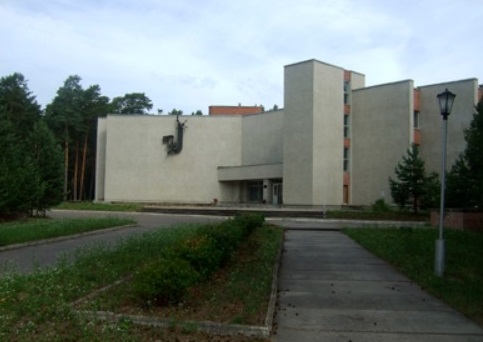Logunov Institute for High Energy Physics (Protvino, Moscow region, Russia) of National Research Centre "Kurchatov Institute" is organizing the XXXVII International Workshop on High Energy Physics “Diffraction of hadrons: Experiment, Theory, Phenomenology”, July 22-24, 2025.
The purpose of this Workshop is to highlight and review the most pressing problems in the field of hadronic diffraction (elastic scattering, central diffractive production, single and double dissociation, diffraction in hadron-hadron, lepton-hadron interactions, diffraction on nuclei, models of diffraction, historical aspects) as well as relevant experimental data.
To this end the workshop will consist of
invited talks only
and a 1-hour discussion session after each working day with a summary from the discussion leader will be arranged.
Dear Colleagues,
We kindly ask you to submit the abstract of your talk (at least in a condensed form) via this web-page (or via e-mail, in case of problems).
This would help us to arrange the program and the corresponding discussions in advance.
Topics to be discussed
● Experimental data on diffraction
ü Hadron diffraction (elastic scattering, central diffractive production, inclusive processes etc)
ü Diffraction in lepton-hadron interaction
ü Diffraction on nuclei
● Theoretical models of diffraction
● Historical aspects
Wishes to speakers
- As one can see from the program, our Workshop concerns various fields sometimes very different from each other, both conceptually and in technical terminology.
- That is why we would like to avoid excessive diversification and to try to preserve to a certain extent the unity of the high energy physics community.
- In this regard, we would like to ask all speakers, if possible, to kindly avoid, if possible, details that are understandable only to a narrow circle of deeply involved experts and to make the presentation simpler and clearer (thus more interesting!) to a wider circle of participants.
- We also believe that it would be of great importance to give, at least in a concise way, the conceptual motivation of your subject.
We are aware that this task can be rather difficult, so in no way the above wishes are mandatory and every speaker is, certainly, free to deliver her/his talk according to her/his own desire and convenience.
Wishes to discussion leaders
- It is assumed that each session will end with a general discussion (near one hour).
- The discussion is led by the discussion leader.
- The first part is assumed to be devoted to additional questions which bear a conceptual character, which are collected by technical coordinators and then sent to the discussion leader. It is meant that during the talk time only technical short questions not bearing a conceptual character are admitted. This is regulated by the chairperson.
- In the second part the discussion leader is asked to give a brief summary of the session's reports and a brief description of the most important unresolved problems related to the topic of the session.
- The allocation of time for discussion and summary is left to the discretion of the discussion leader.
- Additional wishes to discussion leaders:
The hour of discussion is divided into three parts.
1. Conceptual questions to speakers of the session(s) from the
audience.
2. A short summary from the discussion leader for each of the talks of
the session(s).
3. General summary of the state of affairs and prospects.
Topic(topics) - at the choice of the discussion leader, but relevant to at least one talk of the session(s).
The distribution of time among the above parts is at the choice of the presenter.
Structure of the workshop
- Participation will be available both in person and online.
- Speakers by invitation only.
- Two sessions with 4-5 invited talks of 25 minutes duration and 5 minutes for
questions (additional time is possible by request) and debates of a current character after each talk will be arranged every day. - In the evening one hour will be devoted to moderated open discussion of relevant general problems.
- Poster sessions are envisaged for young participants (graduates and post graduates) as everyday last 40-min sessions.
- Only registered participants can follow the sessions and take part in the discussions.
The first step is to register in the indico system https://indico.ihep.su/register/
Next, the system will send a link to confirm the email.
After that, you can log in to the indico system with the login you received and register for the conference.
- Proceedings of the workshop will be published in Physics of Elementary Particles and Atomic Nuclei of the Joint Institute for Nuclear Research (JINR, Dubna)
The session summaries are envisaged to be placed jointly in the arXiv (hep-ph).
IMPORTANT DATES
- July 10, 2025 - end of abstract submission
- July 15, 2025 - end of registration of speakers
- July 22, 2025 - start of the Workshop
Participation
Participation with review talks is by invitation of the Organizing Committee.
In the case of a proactive request the decision is made by the Organizing Committee.
The sessions will be online by appropriate software and also in person.

